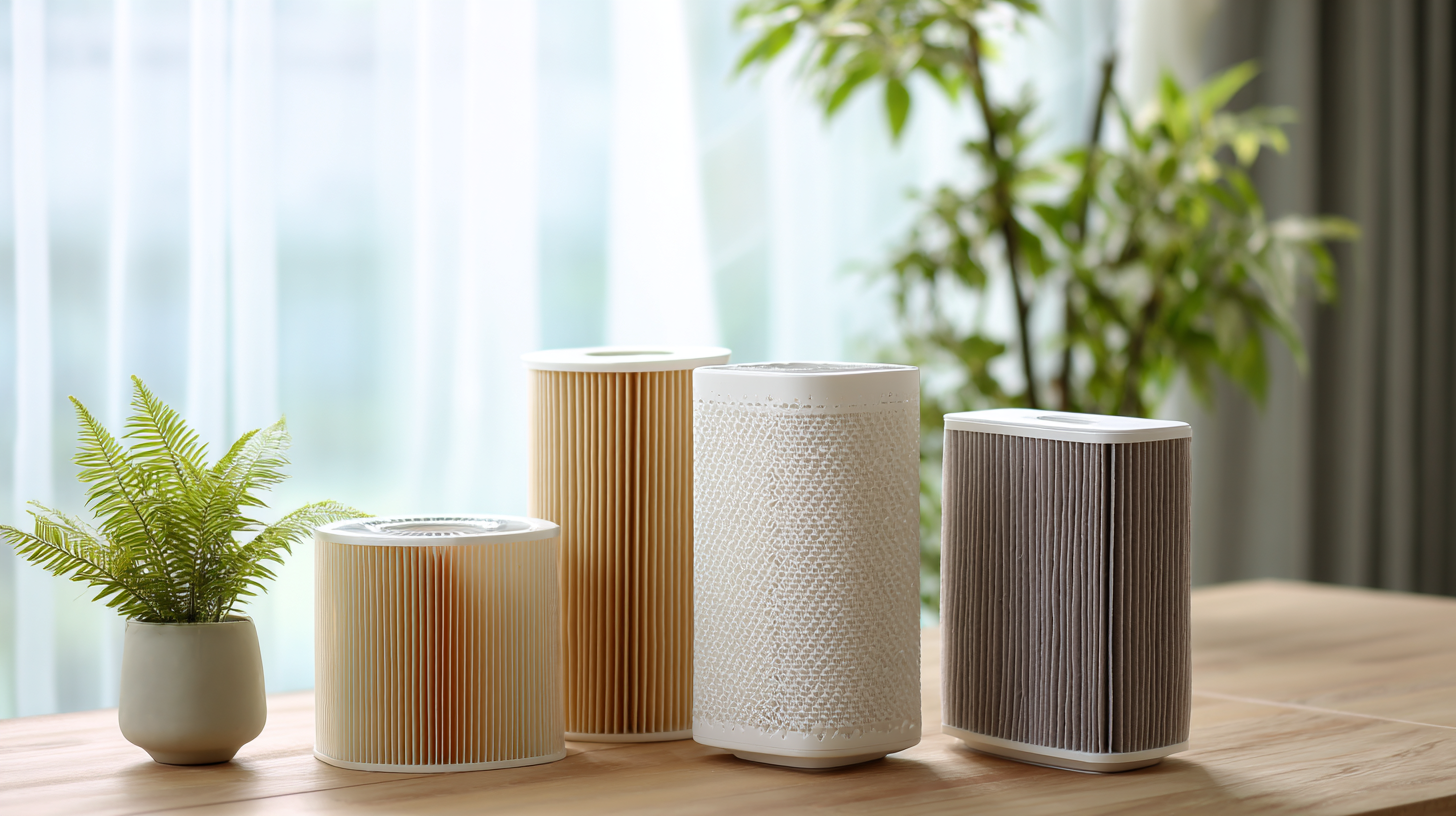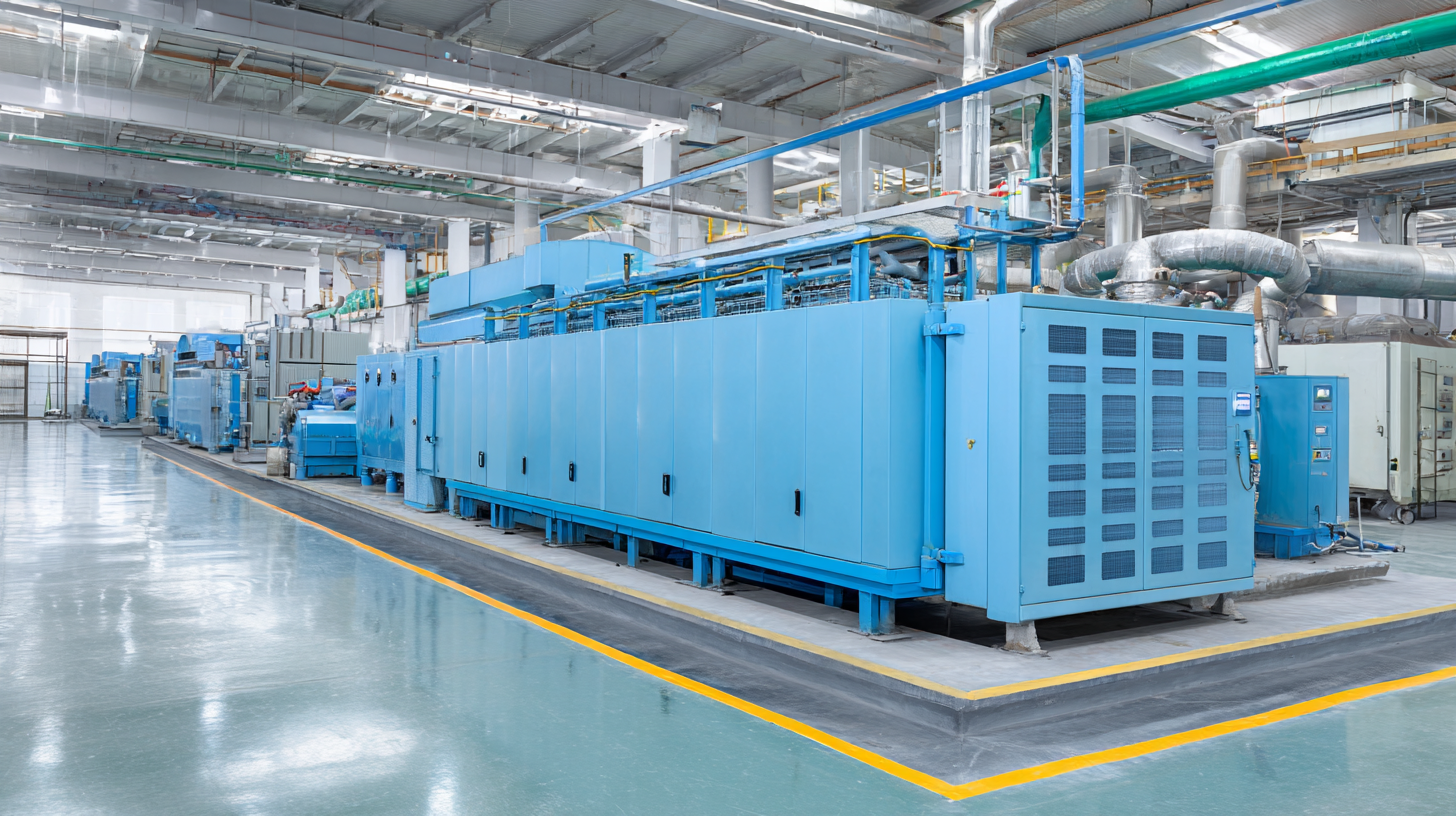As the demand for efficient indoor air quality solutions continues to rise, the dehumidifier filters market is anticipated to experience significant growth by 2025. According to a recent market research report by Grand View Research, the global dehumidifier market size was valued at approximately USD 2.12 billion in 2020 and is expected to expand at a compound annual growth rate (CAGR) of 6.1% from 2021 to 2028. This growth is closely tied to the increasing awareness of the importance of maintaining optimal humidity levels in residential and commercial spaces. Furthermore, advancements in filter technology, alongside improved after-sales service and reduced maintenance costs, are becoming critical factors for global buyers. As we delve into the future trends influencing the dehumidifier filters market, we will explore essential insights that will guide consumers in making informed decisions while maximizing the lifespan and efficiency of their dehumidification systems.

The dehumidifier filters market is on the cusp of significant technological advancements that promise to reshape the industry by 2025. As consumers become more aware of indoor air quality and its impact on health, innovation in filter technologies is essential. The integration of smart technologies, such as IoT-enabled filters, allows users to monitor humidity levels in real-time, enhancing their ability to manage indoor climates efficiently. This connectivity not only optimizes dehumidifier performance but also enables remote control through mobile applications, providing convenience and peace of mind.

Additionally, advancements in materials science are paving the way for more effective and eco-friendly filter designs. Innovations such as ultra-thin membranes and antibacterial coatings contribute to improved moisture absorption and microbial resistance. The advent of biodegradable filter options signals a shift towards sustainable practices within the industry. As manufacturers prioritize both performance and environmental impact, the market will likely see a rise in demand for filters that align with consumer values, highlighting the importance of sustainability in the evolving landscape of dehumidifier technologies.
As the demand for dehumidifiers increases, consumers are becoming more eco-conscious about the filters they choose. The shift toward sustainability is driving market trends in dehumidifier filters, with manufacturers focusing on eco-friendly options. Consumers are now seeking filters made from sustainable materials, ensuring that their choices contribute positively to the environment while also maintaining air quality at home.
Tips for selecting eco-friendly filters include looking for products that are biodegradable or made from recycled materials. Additionally, consider filters that require less energy to operate, as this not only reduces your carbon footprint but also saves on electricity bills. Regular maintenance can also extend the life of your filters, further supporting sustainability by reducing waste.
As the overall market for portable air solutions continues to grow, driven by consumer need for efficiency and convenience, the same principles apply to dehumidifier filters. By prioritizing sustainability in their purchasing decisions, global buyers can help shape a market that values eco-friendly practices and innovation.
This chart illustrates the projected growth in the eco-friendly options within the dehumidifier filters market from 2022 to 2025. The data highlights the increasing demand for sustainable products, reflecting consumer preference towards environmentally friendly solutions.
As we look ahead to 2025, consumer preferences in the dehumidifier filters market are set to evolve significantly. With increasing awareness of indoor air quality and a greater focus on health, buyers are likely to gravitate towards filters that prioritize efficiency and filtration capabilities. HEPA filters, known for their high-performance air cleaning properties, are expected to gain popularity as consumers seek products that can effectively trap allergens, dust, and other airborne pollutants. Additionally, the demand for activated carbon filters will rise, as these filters not only reduce humidity but also neutralize odors, catering to the growing preference for fresher indoor environments.

In tandem with filter efficiency, consumers are becoming more knowledgeable about maintenance and usability features. Filters that are easy to replace and clean will appeal to the busy lifestyles of modern users. Furthermore, smart technology integration, such as filter change notifications and connectivity with mobile applications, will likely attract tech-savvy consumers looking for convenience. The ability to customize filter settings or monitor performance remotely may become key features influencing purchase decisions. As the market adapts to these trends, manufacturers will need to align their offerings with consumer expectations to thrive in the competitive landscape.
The dehumidifier filters market is poised for significant growth as indoor air quality becomes an increasing concern globally. In North America, the HVAC system market, closely linked to dehumidification technologies, is projected to expand from $51.61 billion in 2025 to $75.75 billion by 2032, with a compound annual growth rate (CAGR) of 5.6%. This growth trend highlights the rising demand for efficient dehumidification solutions, particularly in residential settings, where the market is expected to witness a CAGR of 3.23% from 2023 to 2028.
Regionally, the desiccant dehumidifier segment is anticipated to thrive, with projections indicating it may reach $817.45 million by 2032, growing at a CAGR of 6.1%. This market segment is increasingly recognized for its effectiveness in controlling humidity levels, especially in moisture-sensitive environments. As consumers and businesses invest in advanced air purification technologies to combat indoor air pollution, the relevance of high-quality dehumidifier filters becomes essential. The focus on improving indoor air quality is driving innovation and investment in dehumidification systems, paving the way for a robust market outlook through 2025 and beyond.
The dehumidifier filter market is poised for significant growth as the demand for effective indoor air quality solutions continues to rise. The global HVAC system market is projected to expand from $51.61 billion in 2025 to $75.75 billion by 2032, with a compound annual growth rate (CAGR) of 5.6%. This upward trajectory underscores the increasing integration of advanced filtration systems within HVAC units, particularly in regions experiencing climate variability and heightened humidity levels.
Key players in the dehumidifier filter market are focusing on innovative strategies to maintain a competitive edge. For instance, as the desiccant dehumidifier market is expected to reach USD 817.45 million by 2032, with a CAGR of 6.1%, manufacturers are increasingly investing in R&D to enhance filter performance and efficiency. Additionally, the air scrubbers market, projected to grow from $1,883.3 million in 2020 to $4,306.4 million by 2030, illustrates the shifting consumer preferences towards high-quality air purification solutions, further propelling the demand for sophisticated dehumidifier filters.
As market dynamics evolve, stakeholders are encouraged to focus on strategic collaborations and product innovation to capitalize on emerging opportunities in this expanding market.